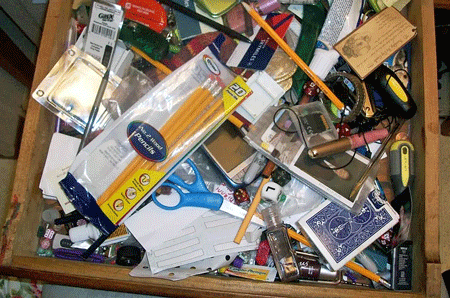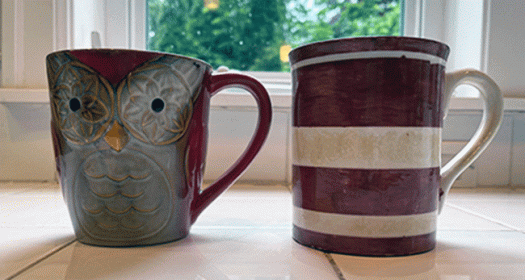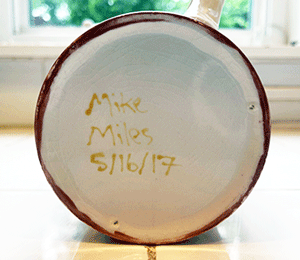Analog lives in a digital world
What makes things special, memorable, satisfying often has less to do with the things themselves than with the context where we experience them.
By Brad Berens
 Some mysteries are eternal.
Some mysteries are eternal.
If the Coyote can afford all those expensive items sold by the Acme Company, then why doesn’t he just visit a desert KFC to eat plumper poultry than the scrawny Roadrunner? Why doesn’t Charlie Brown ask somebody more trustworthy to hold the football? Why does Mr. Darcy jump in that river? Why can’t a genius Professor who can make internal combustion engines out of bamboo fix a boat to escape from Gilligan’s Island? And why do AirBNB hosts always have thimble-sized coffee mugs in their kitchens?
That last one gets me every time.
I prefer coffee mugs large enough to double as hot tubs. More times than I care to confess, when staying at an AirBNB, I’ve dashed to a nearby store that sells adequately-sized mugs and purchased one so that the rate of my early morning coffee intake need not change.
You might be surprised (as I was) at how few stores in tourist destinations carry coffee mugs, particularly large one. That hardware stores are a trusty source was a pleasant discovery. Some souvenir shops sporting apparel that says, “My grandmother went to X, and all I got was this lousy t-shirt” have mugs, although they are ordinarily both expensive and so hideous that I worry they’ll turn my coffee bitter. Goodwill Shops are the mother lode. A large mug may be ugly, but if it costs just a few bucks I can handle it.
At the end of these AirBNB stays, I never feel easy about leaving my new mug-shaped companion behind, so I bring it home and put it into Gen Pop with our many other mugs.
Of course, it would be better simply to BMOM (Bring My Own Mug) with me whenever I am heading to an AirBNB. I managed to remember to do so once, but I often pack in a flurry.
 Here is a photo of my two most recent AirBNB mug acquisitions.
Here is a photo of my two most recent AirBNB mug acquisitions.
For reasons that an insightful psychiatrist may one day tease out, I love mugs featuring owls. I picked up the mug on the left in a gift shop in Ashland, Oregon, when I was attending the Oregon Shakespeare Festival (because Shakespeare).
The mug on the right I found at a Goodwill during a trip to Salt Lake City. It’s a delight: not unattractive, large, and cost less than $5.
The bottom of the mug also represents a mystery:
For those of you insufficiently motivated to double-click or pinch and zoom, the text reads, “Mike Miles 5/16/17”.
 Who is Mike Miles?
Who is Mike Miles?
A quick Google search does little. Is it the basketball player? In Salt Lake, is it the physician’s assistant? The CPA? The therapist?
More curiously, how did a not-unattractive coffee mug hand-crafted by Mike Miles find itself for sale at Goodwill? Was Mike sufficiently invested in his work that he signed it but so unsentimental that he cast it aside when it didn’t meet his standards of mug beauty? Did Mike go through a bad breakup, after which his ex banished all reminders of Mike from her (or his, or their) home? Did Mike die? (I cannot recommend Googling “Mike Miles Obituary;” it’s a sad exercise.)
When I recently mentioned this mug-shaped mystery, this coffee-containing conundrum, to my savvy friend Brian Wieser, he reminded me that the Mormons are skilled at genealogy, and that if any city could help me learn more about a man named Mike Miles, living or dead, that city is Salt Lake. True. But that is a Quixotic quest that I shall not take up because some mysteries deserve to last for eternity.
When digital things flit by in our various feeds, they don’t have the chance to aesthetically fund themselves unless we make an effortful point of visiting and revisiting and revisiting. With analog things that happens naturally.
Although I must confess that I nurture a faint hope that somebody reading this piece will cry out, “Zounds! I know Mike Miles!” and reach out to enlighten me. (Oh, please… please….)
My point, and yes there is one…
The Mike Miles Mug Mystery persists in my cabinet and in my consciousness because the mug is a physical artifact, analog, IRL. I could not write a column like this one about a tweet, an email, an online article, or a YouTube video because those digital things do not persist in our everyday lives the way concrete things do unless we make an effort to print them out and save them… thus rendering them analog.
Our awareness of physical artifacts pools around us, particularly when the physical things move to a new place. The Mike Miles mug creates eddies in my consciousness, and it’s not just the mug. Going through the contents of my upper right hand desk drawer is like excavating Pompeii. There’s my dress watch! Oh, I had forgotten the penny we had twisted into an oval featuring Mickey Mouse at Disneyland long ago…
When things get new perches in our environments, we have the chance to see them again as if for the first time, rather than just recognizing them. The early twentieth century Russian critic Viktor Shklovsky called this process “ostranenie” or “making things strange.”
In another context, behavioral economist Daniel Kahneman calls this the difference between nimble, recognizing System 1 and plodding, data-driven, seeing System 2. Art Historian Steven Pepper called the layers of repeated exposure to art “aesthetic funding,” arguing that the actual thing we look at is not just the thing itself but all our other times seeing it added together.
When digital things flit by in our various feeds, they don’t have the chance to aesthetically fund themselves unless we make an effortful point of visiting and revisiting and revisiting. With analog things that happens naturally.
For new information, new experiences, light speed distribution, nothing beats digital.
But for mulling things over, second thoughts, slow thinking (like slow food or slow television), savoring things, analog wins.
There are many flavors of satisfaction.
__________

Brad Berens is the Center’s strategic advisor and a senior research fellow. He is principal at Big Digital Idea Consulting. You can learn more about Brad at www.bradberens.com, follow him on Twitter, and subscribe to his weekly newsletter (only some of his columns are syndicated here).
See all columns from the Center.
June 24, 2020

